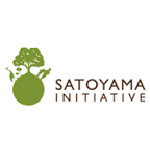A strategy for making sustainable biodiversity use economically attractive, ecologically sustainable and socially sustainable
Biodiversity conservation is one of the most important sustainability issues in the ecologically sensitive areas such as the Western Ghats.In the Northern Western Ghats of India challenges in achieving biodiversity conservation at landscape level include poor awareness about the significance of biodiversity in supporting livelihoods and maintaining a healthy climate regime among key stakeholders- government and investors; while among the primary stakeholders it is the absence of sustainable economic opportunities based on the forest resources. In order to address these key issues, AERF spearheaded a range of initiatives to create income generation opportunities based on sustainable use of biodiversity at selected sites in the forest landscapes of Maharashtra statein Shahapur block of Raigad district,in Sangameshwar block of Ratnagiri district and Bhimashankar Wildlife Sanctuary in the Northern Western Ghats as well as in Lakhani block in Bhandara district. For promoting green entrepreneurship AERF focuses on building capacity and skills of forest dependent communities in conservation and entrepreneurship which results in creating truly sustainable income generation opportunities at local level and bring about change in perception about conservation among the important stakeholders. Following are some of AERF’s key initiatives in the Green Entrepreneurship domain -
Decentralized native oilseed species based bio-fuel production
Bio-fuels are considered as scalable climate change mitigation alternative worldwide.However, implementation of this strategy is mired with controversies- food v/s fuel debate, loss of biodiversity due to monoculture plantation , water scarcity. To begin with, AERF conducted resource assessments of selected native oil seed bearing species, demarcate areas on the GIS based maps, studied the feasibility of the enterprise based on resources . Later AERF worked closely with communities to build awareness about the potential of oil production and held consultations with stakeholders for mutually beneficial enterprise in the form of decentralized bio fuel production centres. AERF has two sustainable denaturalized bio fuel centres at Alibag in Raigad district and at Shahapur in Thane district of Maharashtra.
- Conservation of populations of high conservation value bio-fuel feedstock species- Pongamia pinnata, Madhuca indica and Calophyllum innophyllum through sustainable utilization.
- Sustainable livelihood opportunities created for 500 marginal farmer families through collection and processing of oilseeds.
- Environmentally sustainable energy alternative created at the doorsteps of remotely placed communities.
Saving rare and threatened trees by developing innovative value chains
Conservation in community forest landscapes of Northern Western Ghats requires adoption of new strategies for sustainability. Increasing pressure on forests due to land use change, growing economic aspirations of local communities and presence of ecologically important species in this landscape is a challenge and rarity of valuable species is increasing day by day . Through research and pilot experiments, AERF could successfully establish value chains for conservation of following tree species and has successfully scaled up to demonstrate benefits of Conservation
- Pterocarpus marsupium- a native tree found in Western Ghats of India, traditionally known for timber and livestock fodder
- IUCN redlist status- vulnerable
- Current use- indiscriminately felled and sold as timber at few places and fire wood at other places.
- Recent discoveries about its use in treatment of diabetes highlights value addition potential
- Our approach- cost benefit analysis , value addition through new product development
- Terminalia bellirica is large deciduous tree mainly found in Northern Western Ghats. It is also distributed in eastern and central parts of India
- Traditionally the fruits (Beheda) find use in the Indian System of Medicine – Ayurveda- since ages for making Triphala.
- In absence of attractive market price for collection of fruits, communities sell this tree for making truck bodies.
- This giant tree with natural cavities is preferred nesting tree of Great Hornbill and Malabar pied hornbill in the NWG.
- Our approach- promote sustainable collection of fruits using FAIRWILD certification protocol backed by premium price ( 2 times the market price ) and long term purchase agreements with local collectors.
- Total 600 large trees of Terminalia bellirica from 20 villages have been saved.
- About 300 mid sized trees of Pterocarpus marsupium have been saved in three villages.
- 28 nesting sites of Malabar pied hornbill and 5 nesting sites of Great hornbill are conserved.
- Sustainable livelihood opportunities created for 100 marginal farmers and 10 unemployed youth through collection and processing of fruits as well through making of tumblers.
Video



